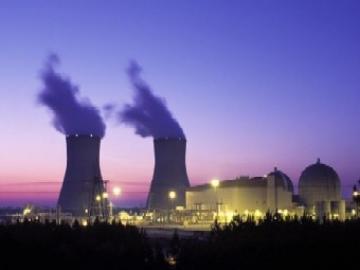
Section Branding
Header Content
New Emergency Response Rules Questioned
Primary Content

The Nuclear Regulatory Commission has updated its emergency preparedness rules, and critics say it is a trend in the wrong direction.
The new rules recommend initial evacuations in case of a nuclear accident be limited to a two mile radius around the plant..
Roger Hannah is with the Nuclear Regulatory Commission.
“ The people most likely to be affected, or to suffer any health risk in a major accident would be the people living closest to the plant. And this new guidance focuses more on that population than on the people within the ten mile emergency planning zone.”
Dr. Stephen Smith, executive director of the Southern Alliance For Clean Energy, says the accident in Fukashima, Japan shows initial evacuations should be larger.
“Much of the radioactive material was moved significantly further than two miles through downwind projection. So it is those kinds of trends that are very disconcerting and I think a step in the wrong direction.”
Stephan Clark with Georgia Emergency Management says he believes the new rules will make Georgians safer. He says the population around the state’s two nuclear plants remains spread out, and hasn’t significantly increased in 30 years. He says the new regulations require installation of sirens at Plant Hatch in Baxley, which did not have them before. Plant Vogtle near Augusta already has sirens.
The new NRC rules also include emergency drills practicing what to do when there is NOT a major release of radiation. Roger Hannah explains why they want to focus on situations that won’t require evacuations.
“Most accidents would not result in that kind of large scale radiation release. And by doing the same kinds of exercises over and over, nuclear power plant operators, as well as local and state authorities may be lulled into a false sense of thinking that it’s always going to follow that same kind of timeline.”
Dr. Stephan Smith says that is short-sighted.
“We can hope for the best, but we should plan for the worst.”
Smith says the technology is inherently unforgiving, and accidents like the one at Fukashima illustrate the importance of being prepared for a major radiation release.
Michelle Tims with Southern Power, which runs Georgia’s two nuclear plants, says the company supports the new rules.
"The requirement to conduct an exercise without a release is consistent with the improvement of the drill and exercise program. The variation in scenarios provides the opportunity for the emergency response organization to respond to a broad spectrum of events. For those scenarios that do not include a release of radioactive material, the assessment of the event continues to include an evaluation of any potential releases. "
She says Southern Nuclear is confident that the regulations will not diminish safety, comprehensive emergency planning or strong collaborative efforts with the local emergency responders at each of their sites.
" It is important to understand that this rule has adjusted the frequency of emergency planning exercises evaluated by the federal government, but nuclear sites can conduct these exercises as they see fit. Drills and exercises are conducted frequently to test the plans and train and test employees and oversight agencies on procedure adherence."
Tags: Nuclear Regulatory Commission, Plant Vogtle, Southern Alliance for Clean Energy, Plant Hatch, Stephen Smith, Roger Hannah, emergency response, Georgia Emergency Management, Stephan Clark, Fukashima
